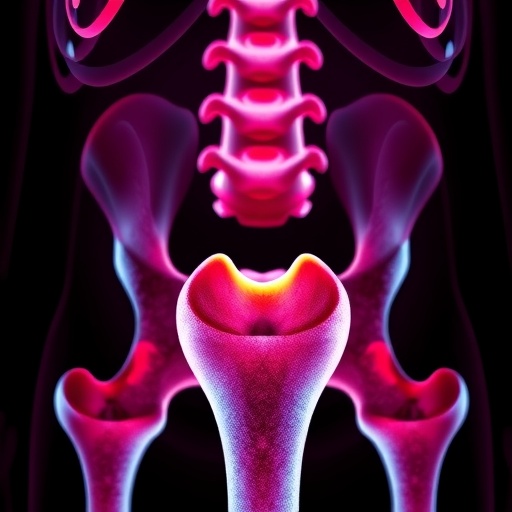Scientists at The University of Texas MD Anderson Cancer Center have engineered a system allowing microscopic monitoring and imaging of cancer that has spread to the bone in mice so they can better understand and develop treatment for bone metastasis in humans.
"Advanced prostate cancer and other cancers metastasize to the bones, causing resistance to therapy and pain for patients, but it's not really clear what makes the bone so special to prostate cancer progression," said Eleonora Dondossola, Ph.D., instructor in Genitourinary Medical Oncology and lead author of a paper in Science Translational Medicine.
"Bone probably provides cues and an attractive microenvironment for cancer cells to grow," she notes, but noninvasive microscopy to study the process in detail is hindered by the thickness of the outer bone blocking the view of inner cavity and bone marrow.
"It was a black box. Finally, our model allows us to get inside the bone with intravital multiphoton microscopy and shed some light on these phenomena," she said.
The researchers show how the technique can monitor and capture the dynamics of tumor cell interaction with bone and bone resident cells as they occur over time.
- A tissue-engineered construct under a mouse's skin develops in about a month into bone with an internal cavity and a thin outer layer that the microscope can "see" through.
- After bone marrow and other cells populate the cavity, a cancer cell line is injected.
- Interactions between malignant cells and bone cells are viewed through the multiphoton microscope via a small glass window sewn into the skin above the bone.
Multiphoton microscopy is a fluorescent imaging technique used to image living tissue. The microscopes in the lab of Peter Friedl, M.D., Ph.D., professor of Genitourinary Medical Oncology, can capture up to seven parameters at a time. Friedl is senior author of the study.
The bone construct was developed by a team of scientists at the Centre in Regenerative Medicine, Institute of Health and Biomedical Innovation, Queensland University of Technology, in Brisbane, Australia, led by Dietmar Hutmacher, Ph.D.
Normal bone biology involves a balance between bone-creating cells called osteoblasts, and bone-destroying cells called osteoclasts, Dondossola notes. Cancer tips this balance, altering the equilibrium between these two populations and leading to symptomatic bone remodeling.
The team's microscopy showed bone loss concentrated around osteoclasts near the tumor. This phenomenon is a known and painful issue for patients with prostate cancer bone metastasis, and a class of drugs called bisphosphonates is used to relieve this symptom. In the clinic, the effect is known to be palliative, relieving pain but not prolonging survival.
The team's multiphoton microscopy captured this effect. They treated the mice with the bisphosphonate zoledronic acid and found that the drug did not reduce the number of osteoclasts, but slowed their activity, preserving bone. Notably, the treatment had no effect on tumor growth, and this explains why the bone is stabilized but patient survival is not prolonged.
Friedl's lab is using this model to study cancer treatments in mice, including co-clinical work in immunotherapy and radiation. Drugs that free the immune system to attack cancer are often thwarted by resistance factors in the tumor microenvironment, which the team hopes to observe and characterize.
###
Friedl holds joint appointments at Radboud University Nijmegen in Nijmegen, Netherlands, and The Cancer Genomics Centre, Utrecht, Netherlands.
Co-authors with Friedl and Dondossola are Stephanie Alexander, Ph.D., Stefano Filippini, Michael Starbuck, Nora Navone, M.D., Ph.D., and Christopher Logothetis, M.D., David H. Koch Center for Applied Research off Genitourinary Cancers and department of Genitourinary Medical Oncology at MD Anderson; Boris Holzapfel, M.D., Ph.D., Elena M. De-Juan-Pardo, Ph.D., and Hutmacher of the Centre in Regenerative Medicine, Queensland University of Technology, Brisbane, Australia; and Robert Hoffman, Ph.D., of the University of California, San Diego.
This research was funded by MD Anderson's Moon Shots Program™ through the Prostate Cancer Moon Shot™, MD Anderson's cancer center support grant from the National Cancer Institute (P30 CA016672) and grants from the NCI (U54 CA210184-01), the Cancer Prevention and Research Institute of Texas, the Prostate Cancer Foundation, The Rolanette and Berdon Lawrence Bone Disease Program of Texas; and NWO-VICI, the European Research Council, the Australian Research Council Training Centre in Additive Biomanufacturing, National Health and Medical Research Council of Australia, National Breast Cancer Foundation, and World Cancer Foundation.
Media Contact
Scott Merville
[email protected]
713-792-0661
@mdandersonnews
http://www.mdanderson.org




